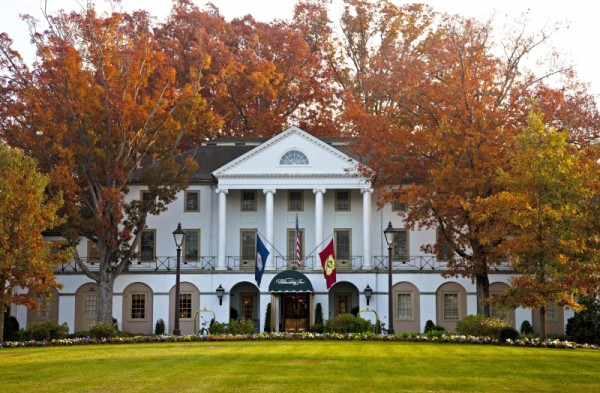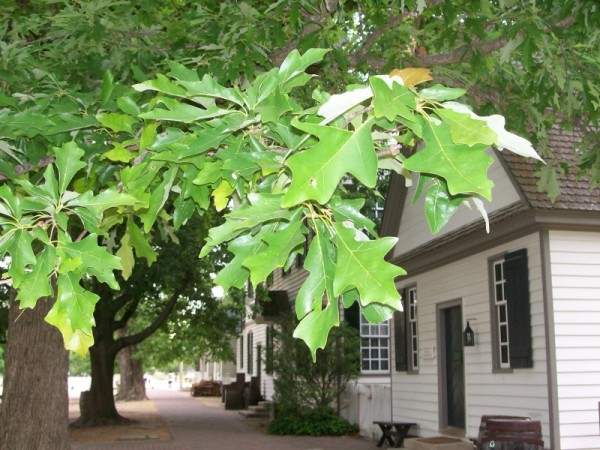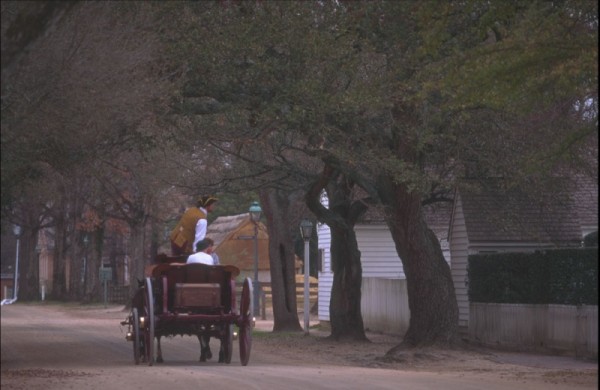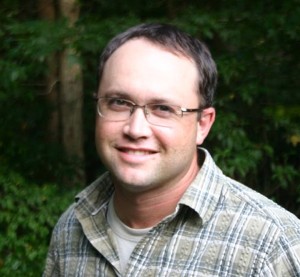
The “new” Great Oak
Could you name three types of oak tree if you had to? How about five? Laura Viancour can. She’s Colonial Williamsburg’s Manager of Landscape Services, part of a devoted team that shoulders a tall responsibility: maintaining the Historic Area’s oaks — all 13 species of them — and much more.
There are over 50 varieties of trees that grow in the Revolutionary City. They’re historic and humble, common and rare, from the stately southern magnolia to ornamental imports like the paper mulberry tree favored by the likes of Thomas Jefferson.
Regardless of whether one can tell a shadblow from a sugarberry, you probably know a good thing when you see it, which is why right now is the perfect time to check out Colonial Williamsburg’s webcams or, better yet, stop by in person. The town will soon be aflame with the fireworks of fall.
Viancour tells Harmony Hunter in this Past & Present podcast how much thought and effort goes into the trees that grace Colonial Williamsburg. After all, the trees are a modern touch (18th-century Williamsburg had few of them because of land-clearing efforts by early settlers), and as needy, living organisms, they demand full-time attention.
Why bother with all that timber, then, if it doesn’t exactly replicate the landscape 18th-century locals knew? Because, according to Viancour, trees serve to enhance guests’ experiences, providing shade and accentuating the historical and aesthetic ambiance of the town.
Take all those oaks, for instance. Each species adds to the stories being told at Colonial Williamsburg. Here are five that cast their shadows on the streets and squares where Americans made history:

White oak at the Williamsburg Inn
White oaks are among the most common of the genus Quercus. Many historic trades have long prized the tight-grained wood, used in varying degrees by coopers, basketmakers, cabinetmakers, wheelwrights, carpenters and joiners. White oak is durable enough to be trusted for the most demanding applications, such as the spokes on carriage wheels.

Scarlett oak
Scarlet oaks fall into the broad category encompassing many “red” oak species, which, like their white cousins, were functional in the 18th century. Every bit of the siding, shingles and fences at Great Hopes Plantation is made of oak. But the scarlet oak is remarkable even among other reds for another reason as well. This tree often exhibits a brilliant spread of ruby foliage in fall that leaves onlookers awestruck.

Overcup oak
Overcup oaks derive their name from a distinctive feature of the oak family: acorns. While many acorns don their cup like a beret, that of the overcup covers almost the entire nut, like a knitted cap pulled low against the season’s chilly breezes. Many creatures like to dine on acorns, and that’s another important role of trees. They’re nurseries for all the wildlife, from bugs to songbirds to squirrels, that make Colonial Williamsburg such a lively place to be.

Live oak
Live oaks, given enough space, spread stout, meandering branches that have an affinity for drooping low to the ground. This makes live oak wood difficult to split and, historically, only useful where tangled, unbreakable grains are an asset, as in ships’ frames. Outside their eccentric form, however, this species is also notable as one of five kinds of oak in Colonial Williamsburg that are semi-evergreen, keeping its leaves year-round in all but the bitterest winters.

Compton oak
Compton oaks are a natural cross between overcup and live oak parents, and another oak that displays lush foliage all year. The Historic Area is home to a single, magnificent Compton oak. Sitting on the north side of Market Square, this expansive tree is one of Colonial Williamsburg’s most recognizable and popular, and for good reason. The canopy is near impenetrable to sunlight and guests often enjoy the ample shade underneath while they’re taking a break from all the attractions nearby.
These oaks represent a small sample of the Revolutionary City’s botanical diversity. For more, be sure to get a copy of the annotated map “Historic Trees of Colonial Williamsburg” available here or at the Visitor Center. Be sure to sign up, too, for “Tall Treasures,” a guided tour that explores Colonial Williamsburg’s extraordinary trees and their utility for humans and animals alike.
WANT TO KNOW MORE?
Manager of Landscape Services Laura Viancour discusses the special trees in the Historic Area in this podcast.
GUEST BLOGGER: BEN SWENSON
 Ben Swenson lives in Williamsburg, Virginia with his wife and two sons. His writing career has led him to all sorts of odd corners of the world: he has jumped out of a perfectly good airplane, wrestled crab pots on a Chesapeake Bay work boat and taken a helicopter ride through a twisting river gorge. Odds are good you will find him outside with them somewhere when he is not chasing or telling stories.
Ben Swenson lives in Williamsburg, Virginia with his wife and two sons. His writing career has led him to all sorts of odd corners of the world: he has jumped out of a perfectly good airplane, wrestled crab pots on a Chesapeake Bay work boat and taken a helicopter ride through a twisting river gorge. Odds are good you will find him outside with them somewhere when he is not chasing or telling stories.
Leave a Reply